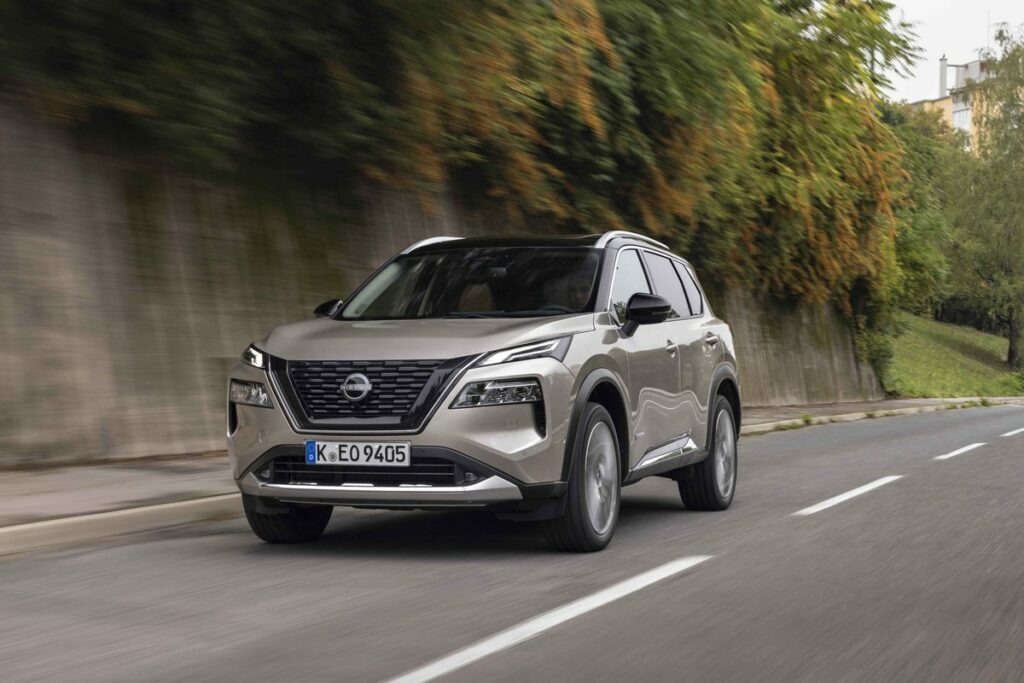European new-car markets’ rollercoaster ride continues in February
07 March 2023

The new-car markets of France, Italy, and Spain all enjoyed year-on-year growth in February. But as senior data journalist Neil King explains, the figures mask the sector’s ongoing rollercoaster ride.
February’s double-digit growth in new-car registrations in Italy and Spain, alongside a healthy single-digit increase in France, suggests a recovery for Europe’s major new-car markets. However, the volumes are set against 2022’s low base of comparison and remain well adrift of pre-pandemic levels.
France’s new-car market expanded by 9.4% last month, exceeding the 8.8% gain in January, but the growth rate was poorer in Italy and Spain than in the first month of 2023. Moreover, France and Italy saw fewer new-car registrations than in February 2021, let alone in pre-pandemic February 2020. Meanwhile, there were more new-car registrations in Spain than two years earlier, but the market contracted 38.4% year on year in that month as consumer confidence was low.
‘In addition, with tourist activity at a standstill, rental companies are not renewing their fleets and, as their purchases are a major part of our market mix, they are weighing down registrations,’ Tania Puche, communications director of the Spanish dealers’ association GANVAM, explained in the ANFAC release of the February 2021 figures.
Furthermore, the ending of the RENOVE scrappage scheme on 31 December 2020, and the increase in vehicle registration taxes from 1 January 2021 brought demand forward into the tail end of 2020.
Adjusted for the extra working day in January, the seasonally-adjusted annualised rate (SAAR) improved in Italy and Spain last month but plummeted in France. This development exemplifies the rollercoaster recovery of Europe’s new-car markets.
Outlook downgrades
All three new-car markets performed below expectations last month, although the deviation in Spain was negligible, at less than 1,000 units.
New-car demand will invariably weaken because of the cost pressures stemming from high inflation, interest rates, and energy costs affecting both businesses and private buyers. Furthermore, there will be fewer cars de-fleeting after three years given the dramatic impact on registrations in 2020, especially between March and June, and the positive influence of improving supply will diminish as order backlogs clear.
These assumptions were already factored into Autovista24’s forecasts, but the outlook for France has been reduced by around 50,000 units for the years 2023, 2024, and 2025. The forecasts for Italy and Spain are about 330,000 and 6,000 units lower, respectively, each year.
Significant risks to these challenging forecasts, such as the ongoing threat to supply chains and energy prices due to the war in Ukraine, remain. Additionally, it remains to be seen whether inflation and interest rates will rise further, which also depends on the effectiveness of government measures to provide support.
In an upside scenario, lower demand for consumer electronics could see a quicker resolution of semiconductor shortages in the automotive industry. However, any improvement in new-car supply will be a short-lived benefit for registrations as the order backlog will clear faster. Subsequently, markets would be more exposed to demand downturns and the net effect would ultimately balance out over time.
EVs bounce back in France
According to data released by the CCFA, the French automotive-industry association, 126,237 new cars were registered in the country last month. The year-on-year growth of 9.4% exceeded the 8.8% upturn in January, which translates to only 3.8% growth when adjusted for the additional working day compared to January 2022. However, the SAAR plunged to 1.56 million units, from 1.78 million in January.
Autovista24 expected a loss of momentum early in 2023 as the reduction in incentives for electric vehicles (EVs) from 1 January pulled some registrations forward into late 2022, with the monthly SAAR higher in December than in any other month last year. However, the significant deterioration in the February SAAR was unexpected.
On a more positive note, the EV share of the market bounced back to 24% last month, up from 22% in January. This is challenging the record 25% set in December 2022 - the last month of higher incentives. This was driven by higher registrations of battery-electric vehicles (BEVs), which gained 16% of the market in February after receding to 13% in January, according to CCFA data. The share of plug-in hybrids (PHEVs), however, fell to 8% after having gained 9% of the market in the preceding four months.
Autovista24’s outlook for 2023 has been reduced to 1.7 million registrations, equating to growth of 11.3%. This is 21.3% lower than the 2.2 million new cars registered in 2019, prior to the COVID-19 pandemic.
Incentives take effect in Italy
Industry association ANFIA reports that 130,365 new cars were registered in Italy last month, up 17.5% year on year. This was slightly weaker than the 19% growth in January, although this upturn was 13.3% when adjusted for the extra working day in January 2022. Moreover, Autovista24 calculates that the SAAR rose to 1.41 million units from 1.34 million.
‘In the second month of the year, the Italian car market maintained its trend of double-digit growth (up 17.5%), once again thanks to the comparison with the sharp slowdown in February 2022 (down 22.6%),’ commented ANFIA president Paolo Scudieri.
As this year’s incentives for EVs only became available from 10 January, this has derailed their registrations in 2023. Nevertheless, they outperformed the wider market by gaining 21.6% year on year last month, with their share increasing to 8% - up from 7.3% in January but still below their 8.7% share in full-year 2022. BEV registrations grew 54%, capturing 3.7% of the market, the same as in 2022. PHEVs, on the other hand, grew by only 2.8% year on year and accounted for 4.3% of new-car registrations last month, which is lower than the 5% share they held in 2022.
As buyers take advantage of the new incentives, EV registrations will gain support and so will the wider market. However, additional funding will be required to maintain the momentum.
‘Despite the positive start in 2023, the scenario for the automotive sector as a whole - already hit by rising energy prices, inflation, the semiconductor crisis and logistics - remains very challenging, also in view of the possible consequences of the regulatory proposals currently being discussed at European level,’ Scudieri explained.
In this context, Autovista24 has reduced its 2023 outlook for Italy to 1.47 million units, equating to growth of 11.4%. At this level, the new-car market would be 23.5% smaller than in 2019.
Transport bottlenecks ease in Spain
A total of 74,001 new cars were registered in Spain during February, according to ANFAC. The 19.2% year-on-year growth was significantly lower than the 51.4% gain in January, although the latter reduces to 44.2% when adjusted for the extra working day in January 2022. Nevertheless, Autovista24 calculates that the SAAR marginally improved to 881,000 units, from 873,000 units in the prior month.
‘The increase in sales is due, in part, to the improvement in the supply chain and in vehicle production. However, it must be remembered that in the final months of 2022 sales fell due to bottlenecks in vehicle transport, so it is not clear how much of the increase obtained in January and February would correspond to these sales retained in November and December,’ ANFAC noted.
Against this backdrop, Autovista24 has subtly reduced its 2023 forecast to 911,000 new-car registrations, equating to growth of 12%. This falls 27.6% short of the volume achieved in 2019 and Autovista24 does not expect the Spanish market to exceed one million units again until after 2025.
Tania Puche echoed this sentiment, commenting that ‘the economic uncertainty and the difficulties in the logistics and supply chain will not allow, at least, until 2024 to overcome the psychological barrier of one million units registered per year.’



